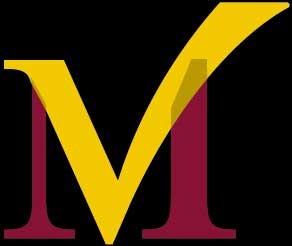OOn 13th March 1912, Serbia and Bulgaria agreed to takeover the Turkish provinces on the Balkans. Macedonia was divided. According to their plans, the area of Ohrid was to be divided into two parts: one section fell under the rule of Serbia, and the status of the second section was to be decided after the war was finished. The beginning of the First Balkan War was greeted with hopes and expectations for liberation of Macedonia. Thus, the Macedonians from Ohrid helped the Serbian, Bulgarian, and Greek allies. More than 500 citizens of Ohrid took part in the battles on the Trachia front. Macedonians also had their own military groups made up of volunteers. Such were the military groups of Petar Caulev, Milan Matov, and Pavle Hristov. The Serbian Army, lead by the second lieutenant Bozidar Simovic, entered Ohrid on 22nd November 1912. Immediately after the Serbian authorities arrested and disarmed the military groups. Also, all the citizens of Ohrid who were engaged in establishing temporary government were pursued. All of them were called “Followers of Bulgaria” by the Serbian regime and became undesirable.
Administratively, the County of Ohrid was part of the Bitola District that was formed the winter of 1912/13. It remained as such until the establishment of the independent Ohrid County 20th November 1913. It consisted of the municipalities of Ohrid, Struga, and Debar.
In May 1913 the powerful countries delineated the borders of the Balkan states. Within the newly established Albanian State, a territory of more than 10,000 hectares was included. The line was drawn near the site called Khafa-san (near Struga) to the north, and the monastery St. Naum to the south. Mixed population lived in that territory. However, according to certain data, about 30,000 Macedonians remained in the part that belonged to Albania. That way the region of Lake Ohrid, that used to be an economic, political, cultural, and administrative entity for centuries, was divided by the borderline created by the powerful countries.
The conditions in Macedonia were rather unfavorable. As a result, a great deal of people left the County in that period. Hence, according to a record from 1923, there were 12,000 inhabitants in Ohrid: 7,000 Macedonians, and 5,000 Turks and Albanians. A year later the town had only 10,000 inhabitants: over 5,000 Macedonians and almost the same number of Muslims, the majority of which were the Turks.
In October 1915 Bulgaria decided to enter into an offensive war against Serbia. The target was Macedonia itself. Towards the end of November that year, the Second Bulgarian Army occupied the part that was under Serbian rule. After the conquest, the Bulgarians divided Macedonia into seven districts, one of which was the Ohrid District. That district covered the same territory as under the previous Serbian rule with a certain expansion in the municipality of Debar.
The presence of the Bulgarians in the Ohrid region will be remembered by the numerous robberies. A large number of objects, books, and other valuable chattel that were century-old testimonies of the growth and achievements of the Ohrid Archiepiscopate, as well as in art and literature were taken away.
After the breakthrough on the Macedonian Front, the Entente forces defeated the Bulgarian and German armies and they had to leave Macedonia. During the same month the Serbian forces took over the rule of the Ohrid District. They immediately reestablished the same governmental system as the one in the period from 1912 to 1915. It should be mentioned that there were numerous incidents on the border. Ohrid was a rather risky place to live in until 1926 when the Kingdom of Serbs, Croats, and Slovenians, together with Albania, delineated the strict border between the two states.

Virtual Macedonia
Republic of Macedonia Home Page
Here at Virtual Macedonia, we love everything about our country, Republic of Macedonia. We focus on topics relating to travel to Macedonia, Macedonian history, Macedonian Language, Macedonian Culture. Our goal is to help people learn more about the "Jewel of the Balkans- Macedonia" - See more at our About Us page.
Leave a comment || Signup for email || Facebook |
History || Culture || Travel || Politics
















I would like to learn Macedonian. Are there any teachers out there in Ohrid whose mother tongue is Macedonian who can help?